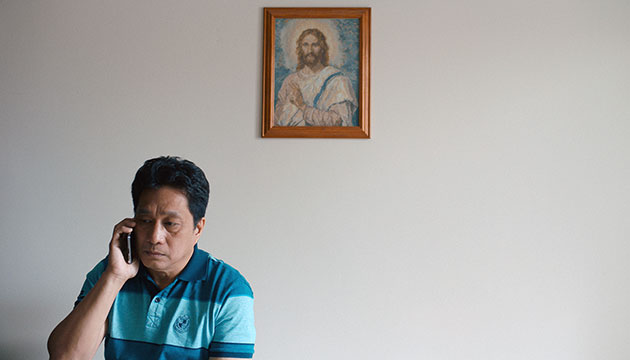Walk into a hospital in Canada or the U.S. or in many other countries, and chances are you’ll see a nurse of Filipino heritage.
The Philippines has long been known as the biggest exporter of nurses in the world.
With the raging COVID-19 pandemic, Filipino nurses find themselves on the frontlines in the fight to contain the novel coronavirus.
They are the unsung heroes in this world-changing health crisis.
A March 6, 2018 article by Stefan Trines, research editor of the World Education News & Reviews, a publication of the U.S.-based nonprofit World Education Services, provides a general idea of how many Filipino nurses are working outside the Philippines.
Citing a 2017 research, Trines noted that immigrants from the Philippines accounted for nearly 30 percent of the 486,000 immigrants working as registered nurses in the U.S., followed by those from India (six percent) and Nigeria (five percent).
In ‘Mobile Nurses; Trends in International Labor Migration in the Nursing Field’, Trines also wrote that in the U.K., the two top source countries in 2016 were the Philippines (23,334 nurses) and India (16,931 nurses), accounting for close to 40 percent of all foreign-trained nurses combined.
Nurses migrate from middle-income countries like the Philippines India, Nigeria or Ukraine to richer countries in North America, Europe, and the Persian Gulf region, Trines noted.
“This trend is reflected by the countries of origin of foreign nurses in the U.S.: 76 percent of foreign-born RNs [registered nurses] in the U.S. in 2015 were from Asia, Africa, Latin America and the Caribbean, compared to only 24 percent from Canada and Europe,” Trines continued.
According to Trines, the Philippines has been the “world’s preeminent source country of migrant nurses for decades”.
“Starting in the 1960s, the Philippine government created a systematic, state-sponsored system of labor exportation designed to foster economic development through remittances from overseas workers,” Trines related.
According to Trines, nurses played a “central role in that strategy and were encouraged to emigrate”.
The number of nursing schools in the Philippines jumped from 17 in 1950 to 88 in 1974. It further increased from 198 in 1998 and 370 in 2005, Trines wrote.
“By the end of the 20th century, an estimated 250,000 nurses were employed overseas in 31 countries around the world,” Trines noted.
On January 26, 2018, the Philippine News Agency reported on a speech delivered in Pasay City by Arnedo Valero of the U.S.-based nonprofit Migrant Heritage Commission.
Valero, who is a lawyer, was speaking at the Filipino Nurses Global Summit and 11th International Nursing Conference.
In his speech titled ‘Nurses without Borders’, Valero estimated that there are around 200,000 Filipino nurses in the U.S.
According to Valero, Filipino nurses represent about 25 percent of all overseas nurses worldwide.
Valero also noted that about 85 percent of employed Filipino nurses work in more than 50 countries.
“Filipino nurses working abroad remit about USD1 billion or about PHP50 billion to the Philippines every year," Valero said, according to the Philippine News Agency.
"Along with other professionals and skilled workers in the U.S., they contribute nearly half of the 80 percent total remittances sent by overseas Filipinos from just nine countries (aside from the US are Canada, UK, UAE, Saudi Arabia, Singapore, Italy, Germany, and Hong Kong)," Valero also said.
According to Valero, Filipino nurses are hardworking, and famous for going out of their way to take good care of their patients.
“No wonder they have become a mainstay of many hospitals and nursing homes in the U.S. and many other parts of the world,” Valero said.
Research by Jean Encinas-Franco, an assistant professor of political science in the University of the Philippines, also provides a perspective at the export of nurses by the Philippines.
Writing in ‘The State and the Globalisation of Care: The Philippines and the Export of Nurses’,
Encinas-Franco cites data from the Philippine Overseas Employment Agency (POEA).
“Within the 17-year-period from 1992 to 2008, a total of 137,755 Filipino nurses were hired abroad, with an average of more than 8,103 annually (POEA 2009),” according to Encinas-Franco.
Encinas-Franco noted that nearly nine in 10 of these nurses were women, “reflecting a patent sex-segregation in nursing as a career choice”.
“Nurse migration and the huge outflow of female domestic workers are largely responsible for the feminised pattern of labour out-migration in the Philippines,” wrote the academic from the University of the Philippines.













